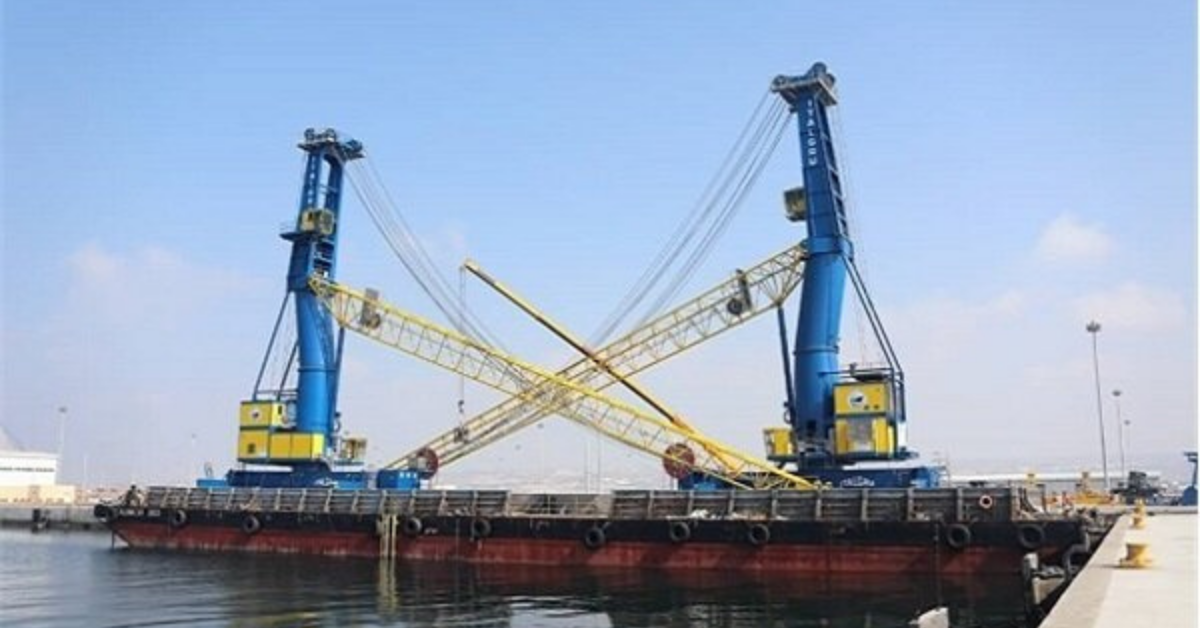The 1st consignment of Indian strategic equipment for the development of port activities at Chabahar port in Iran arrived in the port on January 17.
India delivered the batch of its heavy cranes to bolster operations at Chabahar port.
The strategic loading and unloading equipment cargo is worth $8.5 million and arrived at the southeastern port to mark the activation of the contract between the Ports and Maritime Organization (PMO) and the Indian side.
In an interview with Mehr News, the Director-General of Ports and Maritime Department General in Sistan and Baluchestan province Behrouz Aghaei answered the following questions:
What did the imported equipment include? And apart from heavy cranes, what equipment have the Indians sent to Chabahar so far?
So far, two 140-ton Mobile Harbour Cranes (MGC) made by the Italian company of “Italgro S.R.L.” have been imported.
Other accessories including two telescopic spreaders (a piece of equipment with adjustable-length arms which can lift shipping containers of different sizes by their corners) for the handling of containers up to 40 tonnes, two grub machines with the production capacity of 24 cubic meters, and two C-hook rolls have also been delivered to Iran.
What equipment does the next shipment include and when will it arrive in Iran?
The next consignment, which embraces portable equipment such as two mobile coastal cranes, is expected to be shipped from Italy to Iran within few days.
Please, provide statistics about the goods exported by countries such as Afghanistan to the intended destinations via the port of Chabahar.
Chabahar port has acted as a gateway for Afghanistan and Uzbekistan as of March 2020, based on what follows:
1. Outbound transit of 673 TEU containers weighing 8,350 tons containing dried fruits, fresh fruits, vegetable seeds, and oils from Afghanistan to the ports of Nhava Sheva, Mundra, and Kandla in western India,
2. Outbound transit of 8 TEU containers weighing 120 tons from Afghanistan to China through Chabahar port, including minerals and dried fruits,
3. Inbound transit of 5,541 TEU containers from the port of Kandla (weighing 81,246 tons) of basic goods (including wheat, chickpeas, and sugar) to be exported to Afghanistan via the Iran-Afghanistan border of Milak in Sistan and Balouchestan, and
4. Transit of 25 tons of dried fruits from Uzbekistan through the land border of Hairatan-Dogharoon-Chabahar to India.
Major role of Chabahar Port in Iran’s transit sector
In general, considering its geographical location, Chabahar Port can play a significant role in improving and promoting the transit volume of Iran.
Various negotiations have been conducted with foreign partners to attract investments into the Port and Iran expects further foreign investments considering the attractions of Chabahar port in the near future.
Iran, India, and Afghanistan have inked a trilateral agreement, known as the Chabahar Agreement, which is aimed at increasing the transit level at the port and using its capacities and potentials.
In the first steps of its construction and development, Iran initially penned a temporary contract with an Indian operator and is continuing cooperation while Iran is getting prepared to pen a 10-year Build-Operate-Transfer (BOT) contract with the Indian side, with $85 million of Indian investment in supplying port equipment.
The BOT contract is implemented with 100 percent foreign investment and the Indian side is going to operate this BOT form of the project at Shahid Beheshti port.
According to Iran media reports, in July 2020, Iran’s PMO Head Mohammad Rastad had said that India is pursuing the construction and installing of the necessary equipment in Chabahar port under the framework of a BOT contract. Rastad explained that the grain suckers, gate cranes as well as gantry cranes of Shahid Beheshti port were installed last year, and only the equipment related to the commitment of the Indian operator was remained to be imported and installed in this port.
India is the only foreign country currently involved in a major development project in Iran despite the US sanctions.
The ocean port is to play a key role in the maritime transportation of Iran and the region in the near future.
Source : Mehr News








